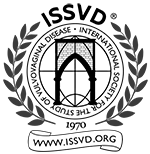






Although blood is mainly a liquid (called plasma), it also contains solid or cellular components (red cells, white cells, and platelets.) The platelets are best known for their importance in clotting blood. However, platelets also contain hundreds of proteins called growth factors which are very important in the healing of injuries.
PRP is plasma with many more platelets than what is typically found in blood. The concentration of platelets and, thereby, the concentration of growth factors, can be 5 to 10 times greater (or richer) than usual.
To develop a PRP preparation, blood must first be drawn from a patient. The platelets are separated from other blood cells and their concentration is increased during a process called centrifugation. Then the increased concentration of platelets is combined with the remaining blood.
As PRP is processed from the patient’s own blood, there is no risk of allergy or rejection with this treatment.
Although it is not exactly clear how PRP works, laboratory studies have shown that the increased concentration of growth factors in PRP can potentially speed up the healing process. For instance, PRP has been used to enhance healing of chronic tendon injuries, acute ligament and muscle injuries as well as healing from certain types of surgery.
Platelets are key factors in hard and soft tissue repair mechanisms. They provide the essential growth factors FGF, PDGF, TGF-ß, EGF, VEGF, IGF that are involved in stem cell migration, differentiation and proliferation. The stimulation of fibroblasts and endothelial cells induces new extracellular matrix deposition and neo-vascularization.
Plasma is essential for cell survival as it contains nutrients, vitamins, hormones, electrolytes and proteins. Proteins are key molecules for the coagulation process and the formation of the fibrin polymer that will serve as a scaffold for cell migration, differentiation and proliferation.
Preliminary evidence suggests that PRP may have a beneficial role in hair regrowth.
PRP injection for local hair restoration in patients with AGA seems to increase hair number and thickness with minimal or no adverse side effects. However, the current evidence does not support this treatment modality over other current treatments due to the lack of clinical evidence, established protocols (i.e., number of sessions, centrifugation, zones to be injected) and long-term follow-up outcomes. For best results, a combinational approach is recommended.
Results of PRP injection may vary. Although a single treatment of PRP injected in the scalp of patients with AGA significantly increased hair density within 6 to 12 weeks, most studies included 3 treatments, performed one month apart.
References:P Gentile et al. The Effect of Platelet-Rich Plasma in Hair Regrowth: A Randomized Placebo-Controlled Trial. Stem Cells Translational Medicine. 2015;4:1317–1323.J Ferrando et al. A Proposal of an Effective Platelet-Rich Plasma Protocol for the Treatment of Androgenetic Alopecia. Int J Trichology. 2017 Oct-Dec; 9(4): 165–170.S Giordano et al. A Meta-Analysis on Evidence of Platelet-Rich Plasma for Androgenetic Alopecia. Int J Trichology. 2018 Jan-Feb; 10(1): 1–10.
HP Stevens et al. Introducing Platelet-Rich Stroma: Platelet-Rich Plasma (PRP) and Stromal Vascular Fraction (SVF) Combined for the Treatment of Androgenetic Alopecia. Aesthetic Surgery Journal. Volume 38, Issue 8, 13 July 2018; 811–822.
Studies have shown that PRP stimulates dermal fibroblast proliferation, suggesting that it may have the potential to promote the remodeling of aged and photoaged skin.
Patients with facial wrinkles, atrophic acne scars, photo-damaged skin, or depressed skin areas who received topical applications, skin injections, or a combination of both therapies generally report improvement of the treated areas within weeks of a single preliminary treatment.
By combining fractional laser or microneedling treatment with PRP application, a number of studies proposed that the healing results are superior.
Although there is inconsistent reporting of PRP preparation techniques, precise composition, mechanism of activation, and a lack of objective outcome measures to prove therapeutic benefit in the current literature, the recruitment of one’s own growth factors that can enhance wound healing and induce tissue regeneration in a cost effective manner has great potential, as seen in preliminary results.
References:
DH Kim et al. Can platelet-rich plasma be used for skin rejuvenation? Evaluation of effects of platelet-rich plasma on human dermal fibroblast. Ann Dermatol. 2011 Nov; 23(4): 424–431.
RS Frautschi et al. Current Evidence for Clinical Efficacy of Platelet-Rich Plasma in Aesthetic Surgery: A Systematic Review. Aesthetic Surgery Journal, Volume 37, Issue 3, 1 March 2017; 353–362.
EP Yuksel et al. Evaluation of effects of platelet-rich plasma on human facial skin. Journal of Cosmetic and Laser Therapy. Volume 16, Issue 5, August 2014; 206-208






